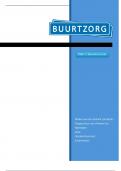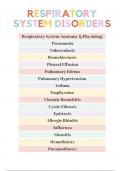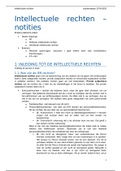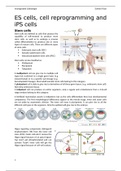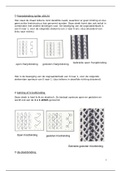Universiteit Van Amsterdam
MsC Persuasive Communication
Spring 2021
Isabel Perez Pedreira
Health Communication
, T-LAP-pr-sea.fr
A fear appeal is a message that has the simple goal to arouse fear in people in order to motivate attitude and behavior change.
History of fear appeals models (Witte & Allen, 2000):
-Fear as acquired drive model: fear —> negative condition —-> motivational drive to change the condition (doesn’t work with too
high or too low levels of fear)
-Parallel response model: 1) danger control proceess (how to avoid the threat?) and 2) fear control (how to reduce feelings of fear?).
No role for efficacy yet.
-Protection motivation theory: the main focus is on danger control, only focused on the danger control part of fear appeals.
-Health belief model: it does not include the emotion “fear” into the appeal
-Extended Parallel Process Model (EPPM): integrates most of the older models.
:
Extended Parallel Process Model (EPPM): Low distress
condition
Step 1: addressing the threat (the consequences of not changing a behavior)
Step 2: addressing the efficacy (following the recommended behavior will lead you to avoid the threat)
Threat: With low susceptibility or severity: no fear, threat is disregarded.
Susceptibility: the idea that the threat can actually happen to you With high susceptibility and severity: fear.
Severity: the size of the consequences if the threat were to happen
Efficacy appraisal: Low self-efficacy or response efficacy: fear control, leads people
Self-efficacy: can I do something about the threat? to reject the message.
Response efficacy: will following the recommended behavior help High self-efficacy and response efficacy: danger control, leads
me avoid the threat? people to accept the message and change their behavior.
Tannerbaum et al. (2015): Kok (2016):
Demonstrated fear appeals are effective and become more Critical of fear appeals.
effective when the message: Only when threat and efficacy levels are manipulated at the
-Includes efficacy statements same time, can we test EPPM.
-Depicted high susceptibility and severity When efficacy was high, more desirable behavior change.
-Recommended one-time only vs. repeated behaviors When efficacy is low, effect on the wrong direction.
-Targeted audiences with a larger percentage of females
Brown & West (2014):
Presents an alternative to EPPM. High distress
condition
Step 1: tell respondents how to change their behavior.
Step 2: show respondents the threat.
Researchers found better response to a fear appeal when there is a high distress condition.
Week 1: Affective Appeals
Brown & West (2014):
-Gives an alternative to EPPM. Why not tell people
how to cope with a threat first, and then scare
them
, the INN TIE ⑤ R ATT NV E- model
What is a behavior? Something someone does that you can observe.
You perform a behavior based on your intention to behave a certain way. Intention is shaped by three constructs:
Attitude: a general evaluation of Norms: the perceived social pressure Self-efficacy: (or perceived behavior
behavior. Can be positive or negative. you feel to behave a certain way. control). How well you can perform a
It’s shaped by: Can be injunctive (you think others want behavior.
-Behavioral beliefs: the probability you to do something) or descriptive -Control beliefs: the control you think
that behaving a certain way will lead to (what you see others doing). you have over performing a behavior.
a certain outcome. -Normative beliefs: your beliefs about -Power of control factors: not a factor
-Outcome evaluation: is that a good how other people that are important to of self-efficacy in itself, but rather the level
or bad thing? Example: if I believe you think you should behave. to which outside factors (or barriers
growing muscle is a good thing, my -Motivation to comply: you want to between you and the behavior) will
attitude towards working out will be behave the way other people believe you influence your control over performing a
positive. should behave. behavior.
Jordan et al., 2012
Did a practical application of the integrative model for soft drink consumption. They followed a stepwise approach: from theory to message
content and message effects.
Step 1: Elicitation Survey
The first step in the integrative model is to perform qualitative interviews with your target groups to determine what beliefs are relevant to
include in your model.
Note: Jordan et al. did not perform a survey, but rather did literature review of relevant beliefs.
Step 2: Quantitative survey study in the target group
Take a chunk of your group and make them answer a set of questions about their behaviors and beliefs.
-What types of questions can we include?
- Attitude: How likely is it that you will eliminate sugar-sweetened drinks for your family during meals every day?
-Norm, injunctive: Do you think that most people like you should or should not eliminate sugar-sweetened drinks for their family during
meals every day?
-Norm, descriptive: Do you think that most people like you will not or will eliminate sugar-sweetened drinks for their family during meals
every day?
-Self-efficacy: If you really wanted to, how certain are you that you could eliminate sugar-sweetened drinks for your family during meals
every day?
Step 3: Statistical analyses
What is the strongest predictor of intention? What are the most important beliefs?
Choose what determinant you are trying to influence with your message (attitude, norms or self-efficacy)
Look at the item with the highest correlation (r). This means the item is the strongest predictor in the model; the key for developing a
message aimed at the most influential determinant.
Step 4: Creative phase: message design and effects
Create advertisements that are pre-tested among members of the study group.
A pre-test post-test design always requires different groups so you can control for the effects of the pre-test on the results.
Week 2: Reflective Decision Making and Health Behavior Change
MsC Persuasive Communication
Spring 2021
Isabel Perez Pedreira
Health Communication
, T-LAP-pr-sea.fr
A fear appeal is a message that has the simple goal to arouse fear in people in order to motivate attitude and behavior change.
History of fear appeals models (Witte & Allen, 2000):
-Fear as acquired drive model: fear —> negative condition —-> motivational drive to change the condition (doesn’t work with too
high or too low levels of fear)
-Parallel response model: 1) danger control proceess (how to avoid the threat?) and 2) fear control (how to reduce feelings of fear?).
No role for efficacy yet.
-Protection motivation theory: the main focus is on danger control, only focused on the danger control part of fear appeals.
-Health belief model: it does not include the emotion “fear” into the appeal
-Extended Parallel Process Model (EPPM): integrates most of the older models.
:
Extended Parallel Process Model (EPPM): Low distress
condition
Step 1: addressing the threat (the consequences of not changing a behavior)
Step 2: addressing the efficacy (following the recommended behavior will lead you to avoid the threat)
Threat: With low susceptibility or severity: no fear, threat is disregarded.
Susceptibility: the idea that the threat can actually happen to you With high susceptibility and severity: fear.
Severity: the size of the consequences if the threat were to happen
Efficacy appraisal: Low self-efficacy or response efficacy: fear control, leads people
Self-efficacy: can I do something about the threat? to reject the message.
Response efficacy: will following the recommended behavior help High self-efficacy and response efficacy: danger control, leads
me avoid the threat? people to accept the message and change their behavior.
Tannerbaum et al. (2015): Kok (2016):
Demonstrated fear appeals are effective and become more Critical of fear appeals.
effective when the message: Only when threat and efficacy levels are manipulated at the
-Includes efficacy statements same time, can we test EPPM.
-Depicted high susceptibility and severity When efficacy was high, more desirable behavior change.
-Recommended one-time only vs. repeated behaviors When efficacy is low, effect on the wrong direction.
-Targeted audiences with a larger percentage of females
Brown & West (2014):
Presents an alternative to EPPM. High distress
condition
Step 1: tell respondents how to change their behavior.
Step 2: show respondents the threat.
Researchers found better response to a fear appeal when there is a high distress condition.
Week 1: Affective Appeals
Brown & West (2014):
-Gives an alternative to EPPM. Why not tell people
how to cope with a threat first, and then scare
them
, the INN TIE ⑤ R ATT NV E- model
What is a behavior? Something someone does that you can observe.
You perform a behavior based on your intention to behave a certain way. Intention is shaped by three constructs:
Attitude: a general evaluation of Norms: the perceived social pressure Self-efficacy: (or perceived behavior
behavior. Can be positive or negative. you feel to behave a certain way. control). How well you can perform a
It’s shaped by: Can be injunctive (you think others want behavior.
-Behavioral beliefs: the probability you to do something) or descriptive -Control beliefs: the control you think
that behaving a certain way will lead to (what you see others doing). you have over performing a behavior.
a certain outcome. -Normative beliefs: your beliefs about -Power of control factors: not a factor
-Outcome evaluation: is that a good how other people that are important to of self-efficacy in itself, but rather the level
or bad thing? Example: if I believe you think you should behave. to which outside factors (or barriers
growing muscle is a good thing, my -Motivation to comply: you want to between you and the behavior) will
attitude towards working out will be behave the way other people believe you influence your control over performing a
positive. should behave. behavior.
Jordan et al., 2012
Did a practical application of the integrative model for soft drink consumption. They followed a stepwise approach: from theory to message
content and message effects.
Step 1: Elicitation Survey
The first step in the integrative model is to perform qualitative interviews with your target groups to determine what beliefs are relevant to
include in your model.
Note: Jordan et al. did not perform a survey, but rather did literature review of relevant beliefs.
Step 2: Quantitative survey study in the target group
Take a chunk of your group and make them answer a set of questions about their behaviors and beliefs.
-What types of questions can we include?
- Attitude: How likely is it that you will eliminate sugar-sweetened drinks for your family during meals every day?
-Norm, injunctive: Do you think that most people like you should or should not eliminate sugar-sweetened drinks for their family during
meals every day?
-Norm, descriptive: Do you think that most people like you will not or will eliminate sugar-sweetened drinks for their family during meals
every day?
-Self-efficacy: If you really wanted to, how certain are you that you could eliminate sugar-sweetened drinks for your family during meals
every day?
Step 3: Statistical analyses
What is the strongest predictor of intention? What are the most important beliefs?
Choose what determinant you are trying to influence with your message (attitude, norms or self-efficacy)
Look at the item with the highest correlation (r). This means the item is the strongest predictor in the model; the key for developing a
message aimed at the most influential determinant.
Step 4: Creative phase: message design and effects
Create advertisements that are pre-tested among members of the study group.
A pre-test post-test design always requires different groups so you can control for the effects of the pre-test on the results.
Week 2: Reflective Decision Making and Health Behavior Change

